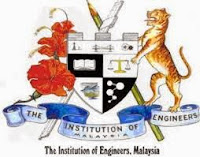AS Malaysia gears up to developed nation status by 2020, there is still much to do to get there.
One of the most direct ways to arrive at the vision is to ensure a sufficient and growing number of engineers.
Increase in the number of engineering students is paramount to meet the nation’s need for engineers who would implement and maintain the many economic development projects.
During his visit to the International Bureau of Education (IBE) in Geneva in April, Deputy Prime Minister Tan Sri Muhyiddin Yassin spoke of the need for Malaysia to harness skills and knowledge in Science, Technology, Engineering and Mathematics (STEM).
Muhyiddin also pointed out that the countries which started on the same level as Malaysia had moved much further ahead, crediting it to their wisdom in making full use of STEM to boost their country’s fortunes.
As such, he emphasised the need for human capital development in STEM, which he considers vital in the national transformation process.
To achieve this, a strategy comprising a series of actionable plans must be able to support the production rates needed for generating skilled STEM human capital at two levels, namely secondary schools and tertiary institutions, to reach the target of 500,000 STEM graduates by 2020, according to Muhyiddin.
Although the solution is apparent, its execution remains challenging.
One of the factors hindering this step to greater national development is getting students to love science, or science classes. Science and mathematics as school subjects must be made interesting, easy to understand, as well as more hands-on and exploratory. This is in line with the Government’s aim for 60% science and technology-based education by 2020.
For the engineering profession, interest in science, technology, engineering and mathematics in school will result in more qualified students who are eligible to pursue engineering courses in universities.
Through the increase in engineering students, the nation’s need for engineers would be met. This would translate into greater implementation and maintenance of the country’s economic development projects.
The Institution of Engineers Malaysia (IEM) lauds the Government’s effort to promote interest among students to study science in schools.
Without the large number of science students, there will surely be a corresponding limitation in the ability of universities to produce the number of engineers needed.
As a national association with the nation’s interests at heart, IEM has been actively involved in conducting school career awareness talks, arranging competitions and exhibiting interesting projects on engineering to school children to promote interest in engineering. IEM has also set up IEM Student to encourage students to choose sections in various universities in Malaysia.
Engineering students are also encouraged to join IEM as Student Members which will enable them to access IEM resources and activities such as talks and networking. IEM is one of the supporting members (together with AAET, MiGHT, Utar and NSC) for the Kuala Lumpur Engineering Science Fair, an annual programme to promote interest in STEM among primary and secondary school pupils.
We believe that career prospects will be a major factor in the students’ decision in their studies and career options.
Prospects for engineers include top level positions, attractive remuneration as well as status recognition, which will be a great motivation for students to take up STEM Education and thus pursue a career in engineering.
Students must be made aware that job prospects for engineering graduates remain bright as Government allocation for infrastructure development has supported the demand for engineers.
National development towards an industrial nation has also spurred the demand for engineers.
Students, and parents too, must realise that a career in engineering is not only limited to the five traditional branches of engineering, namely Civil, Mechanical, Electrical, Electronic and Chemical Engineering. Through the years, engineering has expanded into many new disciplines such as Aeronautical Engineering, Environmental Engineering, Maritime Engineering, Mining Engineering, Oil and Gas Engineering, among many others, which would be exciting career options for students.
The Government being the largest employer should provide equal opportunity and create a structured pathway for all science-based professionals, in particular engineers, to take up high positions in the civil service.
Recognition of the contribution of engineering success and seeing it as a pathway to top positions in the civil service will be a great motivator for students to pursue STEM education in Malaysia.
Related posts:

15 May 2015
However,
in 2009, IEM further amended the constitution to allow only graduate
members and corporate members, who are not professional engineers, to
use the title “Engr” before their names. This will ... In so far as the
approving authorities are concerned, the title “Engr” does not pose any
confusion because all submission of plans need to have the stamp of a
professional engineer (P.Eng.) with the title “Ir” as required by the
Board of Engineers Malaysia (BEM).
It is necessary for the nation to embrace Stem
education in order to reach new heights. IT is imperative that schools
and educational …
IN
our previous article (Stem education for life to reach new heights) we
talked about the engineering feats of the 20th century, what STEM
(Science, Technology, Engineering and Mathematics) stands for and some
ways to...

Stem education for life to reach new heights
Success factors: higher education, right skills and knowledge








